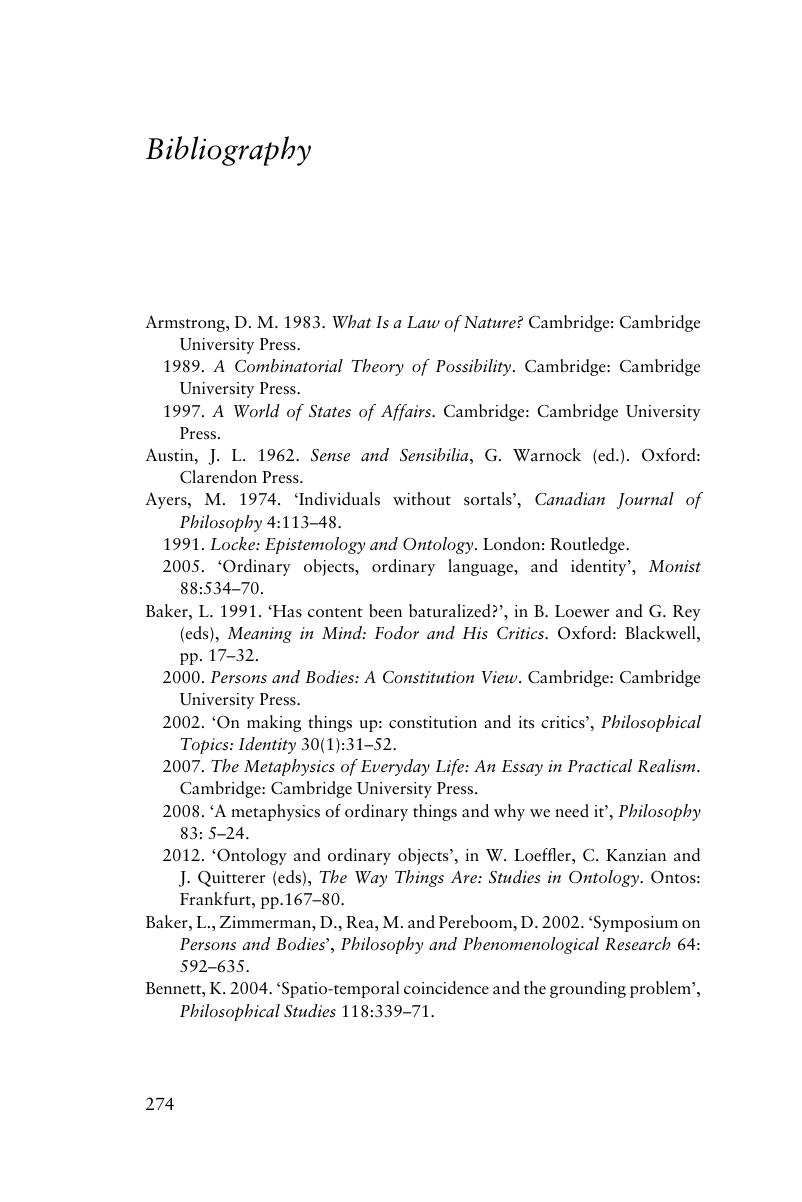Book contents
- The Nature of Ordinary Objects
- The Nature of Ordinary Objects
- Copyright page
- Dedication
- Contents
- Contributors
- Acknowledgements
- Introduction: Issues and Options
- 1 Perception and Ordinary Objects
- 2 Empirical Evidence and the Metaphysics of Ordinary Objects
- 3 Basic Objects As Grounds: A Metaphysical Manifesto
- 4 Objects, Ordinary and Otherwise
- 5 In Defence of Ordinary Objects and a Naturalistic Answer to the Special Composition Question
- 6 Compound Natural Beings: Varieties of Compositional Unity
- 7 How Can Thought Select Between Coincident Material Things?
- 8 Against Analytic Existence Entailments
- 9 Mass Production
- 10 Pragmatism, Ontology and Ordinary Objects
- 11 What Can Global Pragmatists Say About Ordinary Objects?
- 12 There Are No Such Things As Ordinary Objects
- Bibliography
- Index
- References
Bibliography
Published online by Cambridge University Press: 05 April 2019
- The Nature of Ordinary Objects
- The Nature of Ordinary Objects
- Copyright page
- Dedication
- Contents
- Contributors
- Acknowledgements
- Introduction: Issues and Options
- 1 Perception and Ordinary Objects
- 2 Empirical Evidence and the Metaphysics of Ordinary Objects
- 3 Basic Objects As Grounds: A Metaphysical Manifesto
- 4 Objects, Ordinary and Otherwise
- 5 In Defence of Ordinary Objects and a Naturalistic Answer to the Special Composition Question
- 6 Compound Natural Beings: Varieties of Compositional Unity
- 7 How Can Thought Select Between Coincident Material Things?
- 8 Against Analytic Existence Entailments
- 9 Mass Production
- 10 Pragmatism, Ontology and Ordinary Objects
- 11 What Can Global Pragmatists Say About Ordinary Objects?
- 12 There Are No Such Things As Ordinary Objects
- Bibliography
- Index
- References
Summary

- Type
- Chapter
- Information
- The Nature of Ordinary Objects , pp. 274 - 291Publisher: Cambridge University PressPrint publication year: 2019

